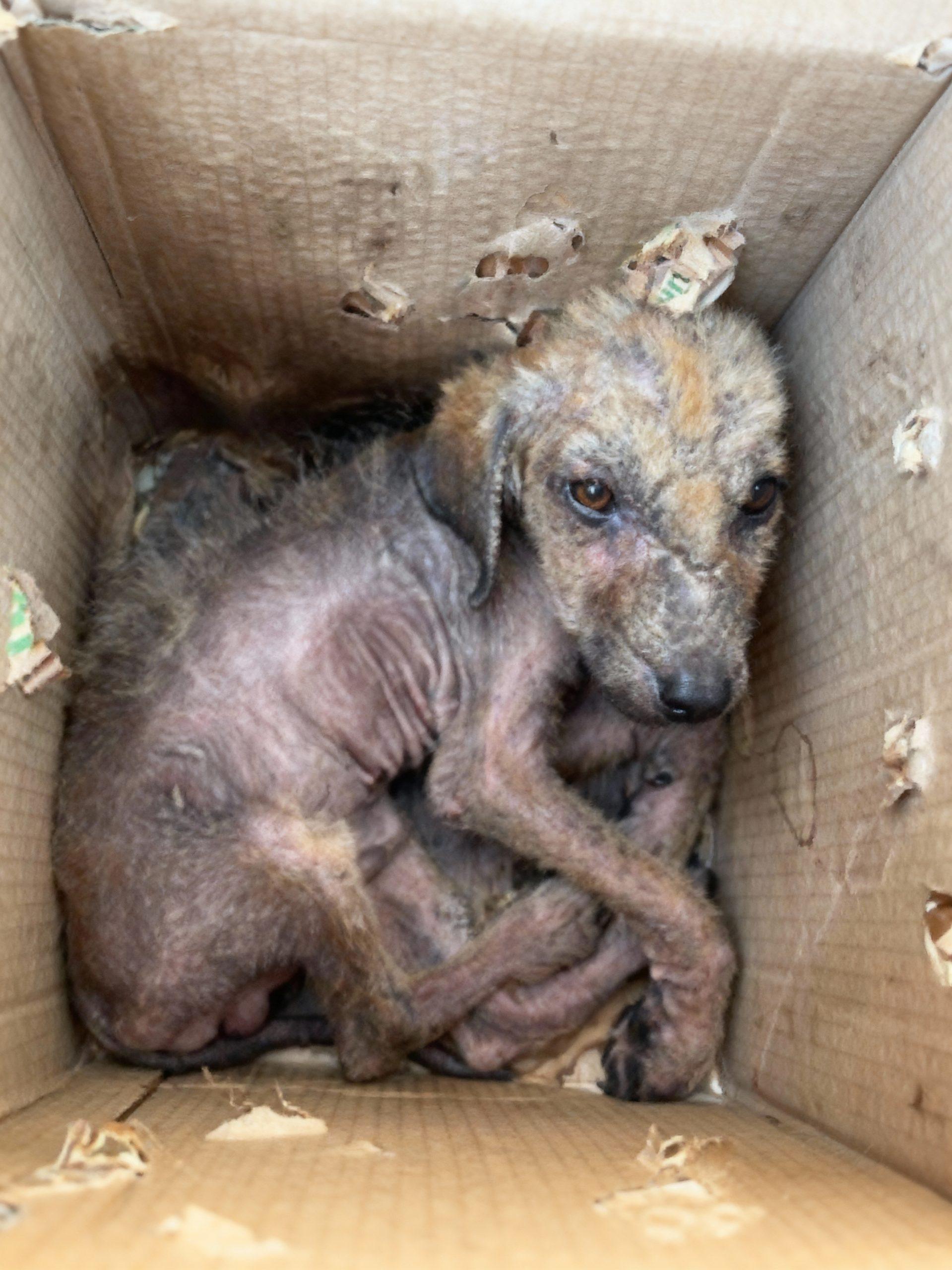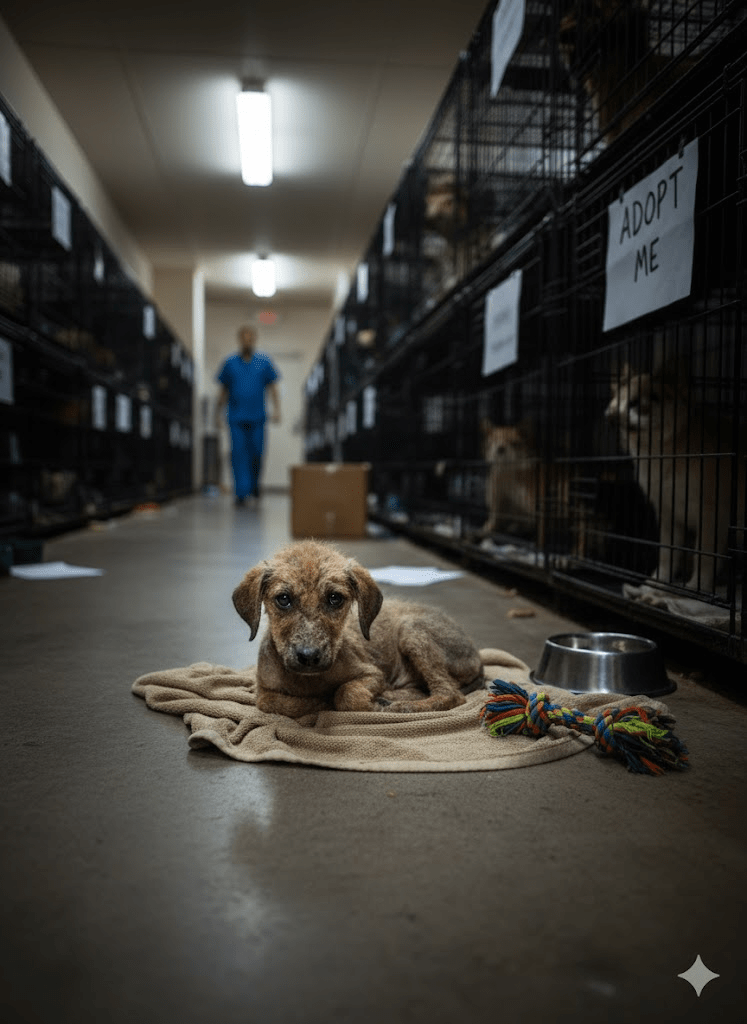The heart-wrenching image before us captures a stark reality faced by countless innocent creatures across the globe. Huddled within the confines of a cardboard box, a small, emaciated dog with patchy fur and sorrowful eyes embodies the silent suffering of animal abandonment. This isn’t just a photograph; it’s a window into a world where neglect and indifference cast long shadows over vulnerable lives. The visible signs of discomfort and fear etched on its tiny face speak volumes about the journey it has endured, a testament to the harsh realities of survival when left to fend for oneself. Its frail body, marked by what appears to be mange or severe skin issues, is a stark reminder of the urgent need for intervention and compassion. This image compels us to look beyond the surface, to understand the deeper systemic issues that lead to such tragic circumstances, and to consider our collective responsibility towards these voiceless beings. It serves as a powerful call to action, urging us to recognize the profound impact of human choices on animal welfare and to strive for a future where every creature is treated with dignity, kindness, and respect.

The phenomenon of animal abandonment is a complex issue, rooted in a myriad of socio-economic factors, lack of awareness, and sometimes, sheer irresponsibility. Economic hardship often forces families to make difficult choices, and pets, unfortunately, can become casualties. The rising cost of living, veterinary care, and pet food can overwhelm owners, leading them to believe that abandonment is their only option. However, this perspective often overlooks the dire consequences for the animal, which is suddenly thrust into a perilous environment, ill-equipped to survive on its own. These animals, once cherished companions, are left to face hunger, disease, exposure to harsh weather, and the constant threat of injury or death. The emotional toll on an abandoned animal is immense, marked by confusion, fear, and a profound sense of loss, as their world, once secure, crumbles around them. It is a betrayal of trust that leaves lasting scars, both physical and psychological.

Beyond economic reasons, a significant contributor to abandonment is the lack of responsible pet ownership. Many individuals acquire pets on impulse, without fully understanding the long-term commitment and responsibilities involved. A cute puppy or kitten can quickly grow into an adult animal requiring substantial care, training, and attention. When the initial novelty wears off, or behavioral issues arise that owners are unprepared to address, abandonment becomes a convenient, albeit cruel, solution. This often stems from a lack of education regarding animal behavior, proper training techniques, and the importance of spaying and neutering. Unwanted litters contribute significantly to the stray animal population, exacerbating the problem and overwhelming animal shelters, which are already struggling to cope with the influx of abandoned animals. The lack of proper identification, such as microchips, further complicates efforts to reunite lost or abandoned pets with their owners, leaving them stranded in an overburdened system.

The ripple effects of animal abandonment extend far beyond the individual animal. Communities bear the burden of increased stray populations, which can lead to public health concerns, road accidents, and the spread of diseases. Overwhelmed animal shelters face immense financial and logistical challenges in providing care for these animals, often operating at or beyond capacity. Many shelters rely heavily on donations and volunteer efforts, highlighting the critical need for broader community support. The emotional toll on shelter staff and volunteers, who witness the suffering of abandoned animals daily, is also significant. Euthanasia rates, a tragic consequence of overcrowding and limited resources, underscore the severity of the problem and the urgent need for preventative measures. It is a cycle of despair that requires a multi-faceted approach to break.







